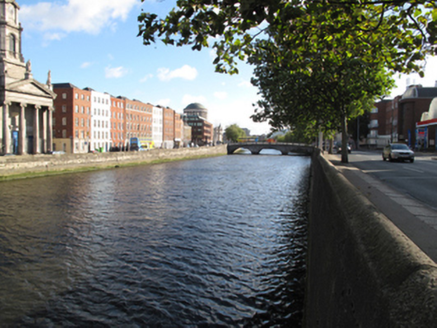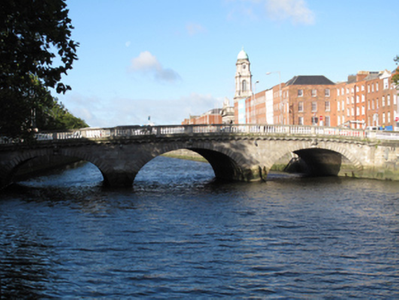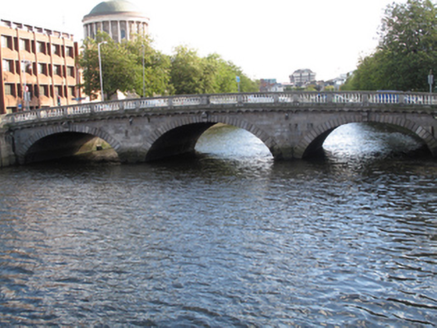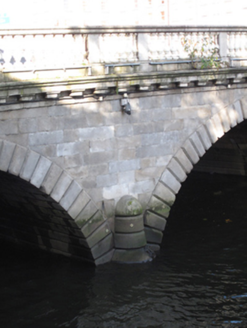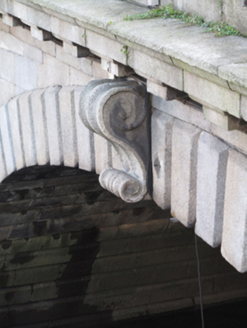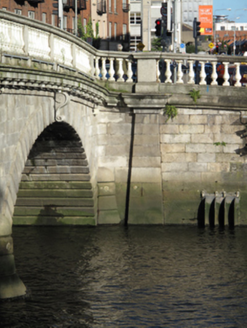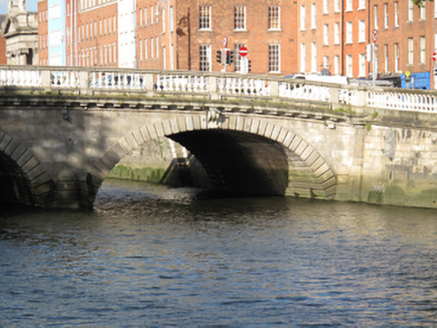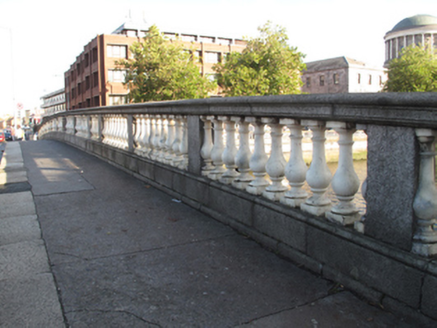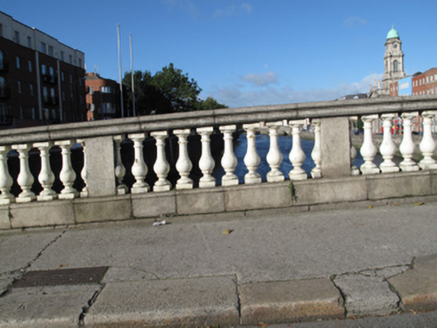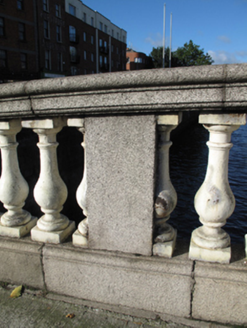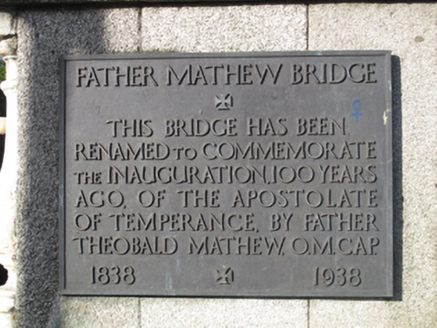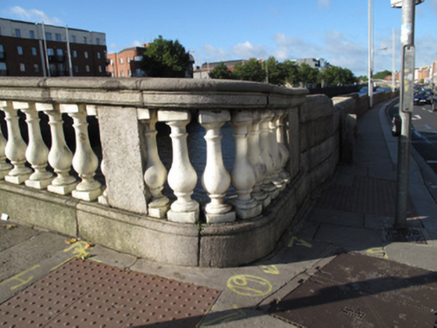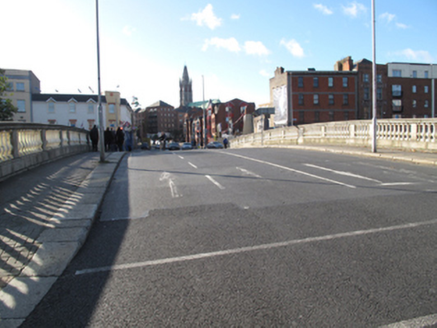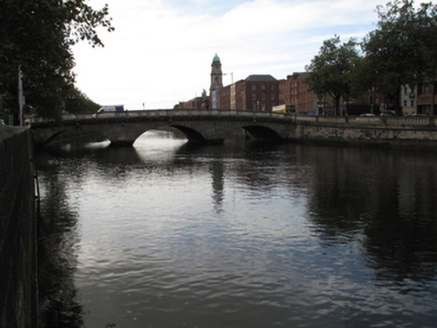Survey Data
Reg No
50080517
Rating
Regional
Categories of Special Interest
Architectural, Artistic, Historical, Social, Technical
Previous Name
Whitworth Bridge
Original Use
Bridge
In Use As
Bridge
Date
1815 - 1820
Coordinates
314885, 234172
Date Recorded
28/10/2013
Date Updated
--/--/--
Description
Three-span humpbacked granite bridge, spanning River Liffey, built 1816-18. Three elliptical arches having feather-edged ashlar granite voussoirs and scrolled keystones. Ashlar granite abutments, piers and spandrels, and bull-nosed cut-waters. Corbelled course to underside of slightly canted parapets having painted cast-iron balusters with moulded stone copings. Cast-iron plaques to interior of central piers. Bridge carries four lanes of traffic.
Appraisal
A fine early nineteenth-century three-span granite bridge, to designs by George Knowles, spanning from Usher's Quay and Merchant's Quay in the south to Inns Quay and Arran Quay in the north. The bridge was erected by Charles Knowles, and is thought to occupy the site of the original river crossing dating back to the first millennium, known as Ford of the Hurdles, after which the city of Dublin takes its Irish name. The current structure was preceded by a masonry bridge know as the Bridge of Dublin, erected in the fifteenth century and paid for by the Dominicans of Ostman Friary. The current bridge was originally named Whitworth Bridge, after Charles, Earl of Whitworth, Lord Lieutenant of Ireland. It was renamed in 1938 in honour of Father Theobald Mathew, an Apostle of Temperance. It is distinguished by fine craftsmanship and restrained classical detailing. That it remains in use today attests to the technical skill of the engineers and artisans responsible for its construction. It remains a prominent and functional city landmark, contributing to the architectural heritage and history of Dublin, on a site representative of the evolution of the capital over one thousand years. This well-composed and well-executed bridge was designed by George Knowles, its design adapted from that of Richmond Bridge to the east, and is built on the site of Dublin's oldest bridge, near the ancient ford. The replication of Richmond Bridge provides a pleasing uniformity to the cityscape. The early use of elliptical arches, which were introduced in the late eighteenth century to produce a flatter bridge profile, is of technical interest, and is evidence of the skilled craftsmanship which was employed in the construction of such a significant piece of infrastructure. The use of cast-iron for the balusters provides a pleasing contrast to the masonry construction and detailing. Commemorative plaques to the interior of the parapets signify the civic importance of the structure.
